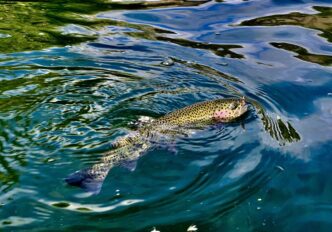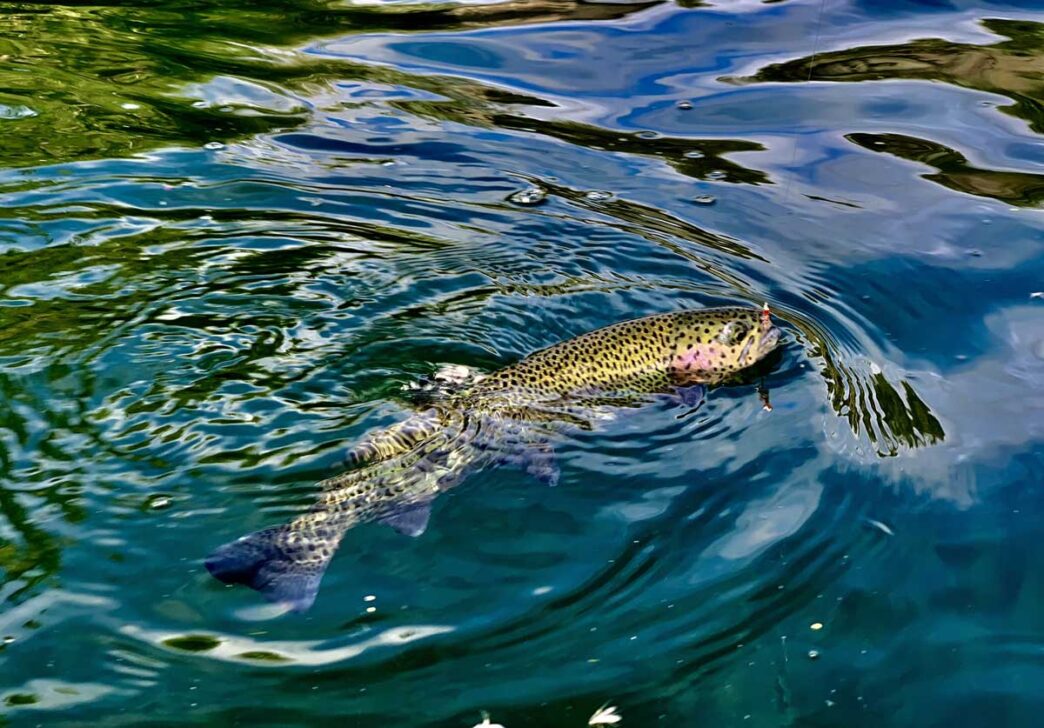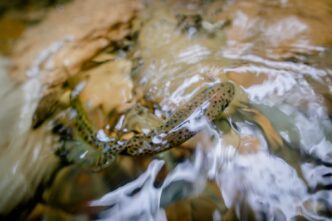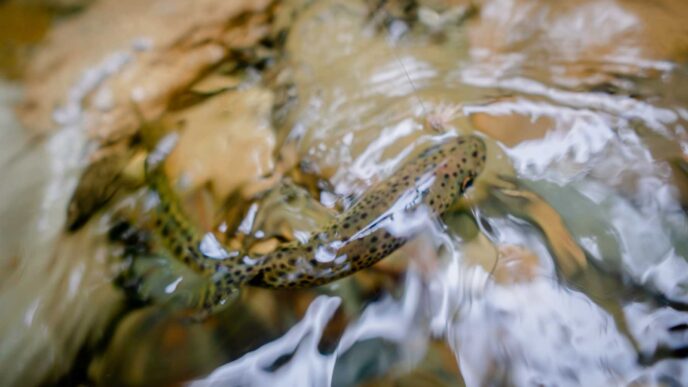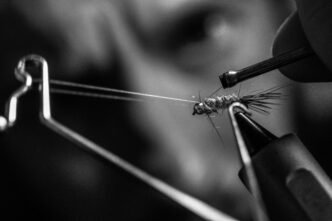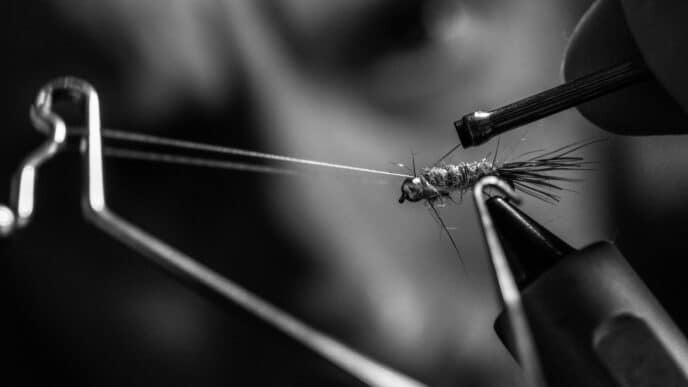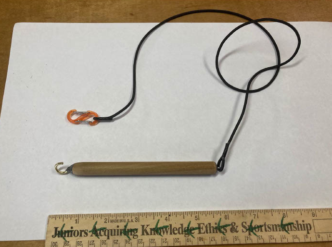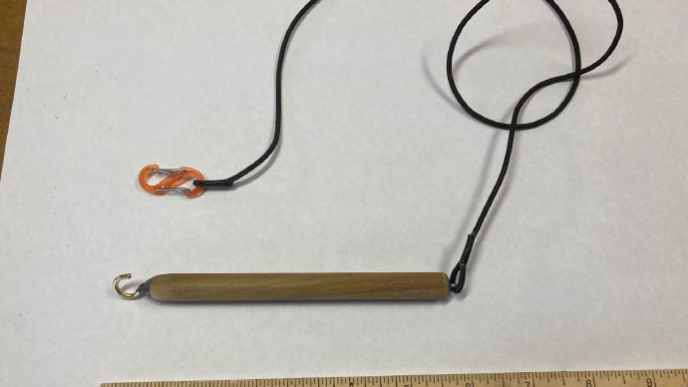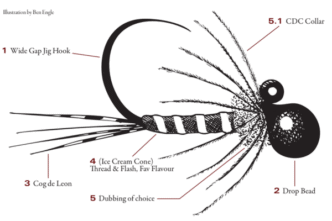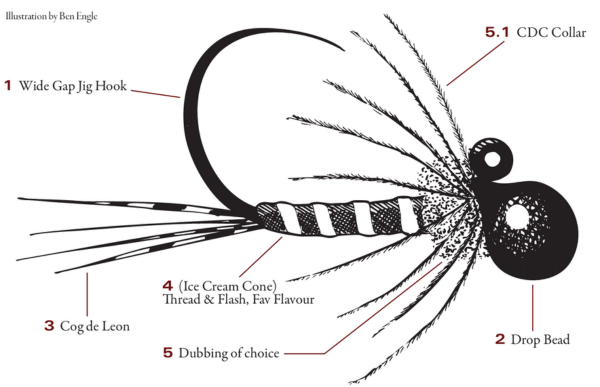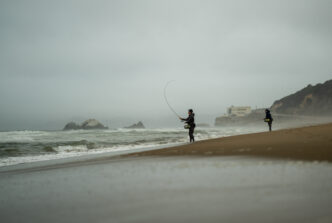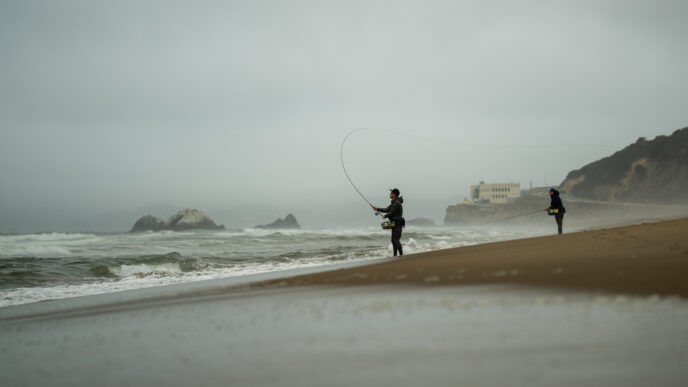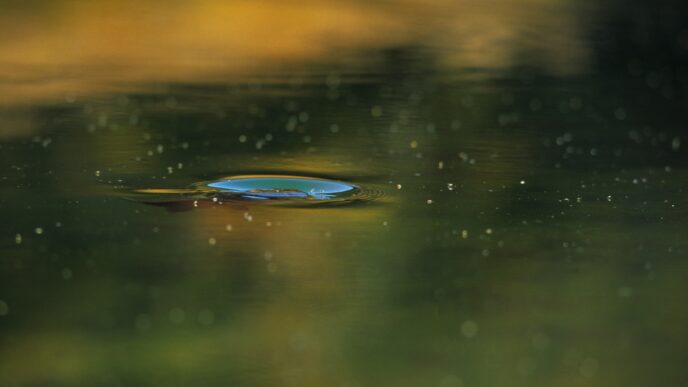Tactical Tips for Springtime Trout
The days are lengthening, the rivers warming, and both bugs and fish are becoming more active.
For many anglers, spring is the beginning of trout season. It’s also my favorite time of year to be on the water. As the days grow longer and warmer, subsurface insect activity picks up, hatches begin to intensify, and trout shift out of their winter doldrums and feed more aggressively. Although the water remains cold, a rise in temperature of even a few degrees is often enough to initiate these changes.
More than any other season, though, spring also brings with it conditions that significantly affect whether we fish successfully or not, such as frequent changes in the weather, snowmelt runoff, river flows above or below normal, and variations in water temperature. There’s nothing an angler can do about changes in weather, and runoff is literally a force of nature, but there are ways to deal with the river flows and low water temperatures that we can expect to encounter this time of year.
LOW FLOWS
According to current forecasts, rivers in California are likely to flow low this spring. If that happens, I expect the late-winter angling conditions I experienced on the Upper Sacramento River this past February will continue from March into May. Some of California’s best insect hatches occur in the early spring. One benefit of low-to-moderate flows in the spring is that the water warms somewhat faster, driving insect activity and opportunities to fish the dry fly. If these low-water conditions persist, as rivers begin to warm they can provide some incredible dry-fly fishing.
Midges are a reliable hatch in spring’s cold water. At this time of year, midge hatches take place in late morning, so I plan to be on the water before noon. Until I’m able to get a read regarding what’s going on, especially when fishing new water, I begin by casting an Allround Palomino Midge. I cover all the water with this fly. If fishing is slow and hatches are light, I fish it drowned before changing flies. I can’t tell you the number of times my drowned dry fly has been hit on the swing at the tailout of a pool while presented just below the water’s surface.
During many midge hatches, you’re likely to see insects clinging to one another. In those situations, the Griffith’s Gnat, which imitates a midge cluster, is an effective fly pattern.
In late March through April, if there are no noticeable hatches, I search the water with a small stonefly pattern. A Skwala imitation, size 12 and in dark olive, is my go-to fly.
April and May bring increases in insect activity as water temperatures continue to rise, and Baetis mayflies hatch in increasing numbers. That’s when I expect to start fishing small Parachute Blue-Winged Olive patterns. As spring progresses, I add much larger March Brown mayfly patterns to my arsenal, as well as patterns for Pale Morning Dunn mayflies and Peacock Caddis.
Insect hatches follow a color progression from dark to light throughout the season. Keep this in mind when choosing fly patterns. As always, observing the size and color of resident insects will help you select an appropriate fly.
Regardless of the pattern, when fishing a dry fly, it’s crucial to try to achieve a perfect dead drift. Before casting, I study the currents and their speed. I manage multiple currents by mending line. Once I’ve made my cast, I mend line to match the speed of my fly to that of bubbles on the water.
There are times, though, when imparting movement can also lead to a hookup. If you’ve ever watched an insect on water, you know that they tend to kick and move, even if ever so slightly. It follows that as a proof of life, some fish need to see your dry fly move. A slight twitch of your rod tip can get the job done, and may make the difference between just catching a fish and catching the fish of the day.
Early spring scenery is breathtaking. Deep snow still covers the mountains, while lower-elevation valleys slowly turn green. Add to that hungry trout taking dries, and smile.

LOW WATER TEMPERATURES
While the water can warm somewhat faster in the spring in rivers that are low, in others, you can count on the water remaining cold in the early spring as runoff becomes a factor, and on the trout being sluggish as a result. When spring water conditions are too cold for consistent insect hatches, trout don’t encounter many emerging bugs. Instead, they feed on familiar subsurface food sources. That makes nymphing your best option for catching fish when cold water inhibits hatches and dry-fly fishing.
To get lethargic trout to react is challenging. I throw shimmering, reflective fly patterns and retrieve them fast. In these conditions, when fishing new water, I find the Flash-Back Pheasant Tail Nymph to be an effective searching pattern, cast downstream and across, and allowed to swing out in the current from shallow to deep water. Other spring season nymphing patterns that I find effective are Zebra Midges, San Juan Worms, Golden Stonefly Nymphs, Purple Prince Nymphs, Pale Morning Dun Nymphs, and Rubberlegs Wooly Buggers.
Springtime anglers fishing nymphs have two options: fish fast or fish slow. You can fish aggressively, covering as much water as you can, or slow down and camp on a location while thoroughly covering it, giving a trout every opportunity to take your fly. If one approach doesn’t work, try the other. Either way, when trout start hitting my fly, I stay put and fish, limiting my downstream movement to one or two steps, at most.
I fish the edges between shallow and deeper water—where the color of water changes from light to dark. Trout hide there, waiting for food to drift by. This requires accurate and confident casting, and I make a habit of practicing casts before my trips. On many Northern California streams, you will be casting beneath overhanging trees. In these conditions, being able to cast accurately and hit your mark pays off.
When walking along the river’s bank slowly and as stealthily as I can, if I come across a deep run with moderate current, I add on split shot to add depth to my presentation. When I fish big water, such as the Pit River, I bring a sinking tip to help me get my fly down deep.
Another way to get the fly down is to counteract the effects of the river’s currents. If I cast a floating line and nymph out at a 45-degree angle downstream, the current immediately will carry the fly downriver under tension, keeping it just under the surface. Anything I do after that will only raise it in the water column. Instead, I cast across or slightly upstream at different angles to keep tension out of the drift and allow the fly to sink. If the next cast I make is even farther upstream, and I add an upstream mend, I’ve allowed more time for the fly to sink, and it will fish deeper in the run. This lets you fish nymphs at different depths in the water column.
Spring fishing helps me shake off the winter blues, but the conditions can make fishing tough. There may not be much we can do about the passage of weather fronts or spate of rivers during runoff, but low water and cold water shouldn’t deter you from going out and enjoying the change of seasons. And if you employ the appropriate tactics, you’ll even catch fish.

The author hooks up at Medicine Lake, just after the thaw.
Photo by Eric Malekos



